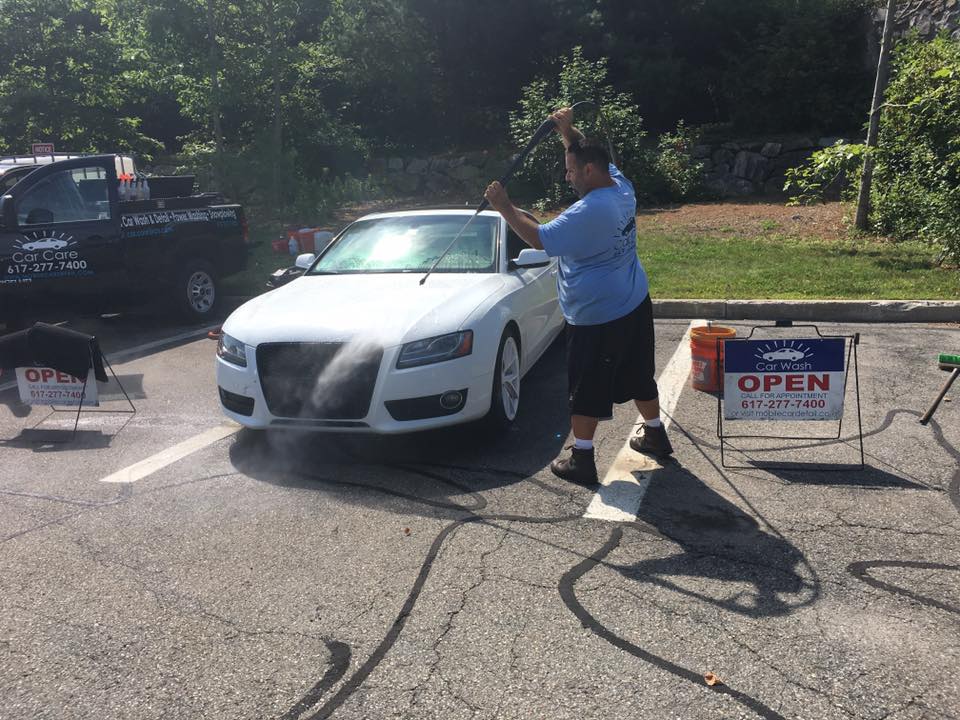What is Orange Peel and 4 Detailing Steps to Remove It?
Imagine finishing a paint job only to discover that the surface is blemished by an uneven, lumpy texture instead of being smooth. We call this orange peel. It is an annoying problem that can detract from the otherwise perfect surface’s quality.
Orange peel is not merely a flaw in appearance. It indicates that something went wrong during the painting process, whether because of technique, equipment, or surroundings. If ignored, it can have an effect on the paint’s longevity in addition to its appearance.
It takes more than a touch-up to get the desired glossy, smooth surface back. To get rid of the orange peel and restore the surface to perfection, a methodical approach is required.
But First, Let’s Understand What Orange Peel Is:
Orange peel is a problem with surface roughness that occurs during painting. It happens when paint does not apply uniformly, leaving a surface that is rough or lumpy.
Orange peel texture is possible on various surfaces, such as vehicles, walls, or furniture. It impacts the appearance and influences the quality of the paint finish. The rough surface can capture dirt and moisture, causing additional problems.
Knowing what causes orange peel is essential. This helps prevent the problem from occurring again after you remove it, and understanding the issue lays the groundwork for effective removal.

Step 1: Assess the Surface:
Before you start removing orange peel, you need to assess the surface. Look at the area to understand the extent of the orange peel. Determine if the issue is widespread or localized. This will help you decide the right approach.
Use proper lighting to see the texture clearly. Sometimes, the orange peel effect is more visible under certain lighting conditions. Examine the surface from different angles.
Once you know the extent of the orange peel, you can decide on the right tools and methods to use. Understanding the surface condition is the first step in effectively removing the orange peel.
Step 2: Sanding:
Sanding is the most effective way to remove orange peel. You will need sandpaper with different grits. Start with a coarser grit to flatten the surface. Sand gently to avoid removing too much paint.
Move to finer grits to smooth the surface further. Sanding helps level out the paint, making the surface smooth again. The key is to work gradually, removing the texture layer by layer.
After sanding, you should have a smooth surface. But sanding alone is not enough. You need to follow up with the next steps to restore the paint’s shine and protection.
Step 3: Polishing:
After sanding, the surface may look dull. The next step to restore the shine is polishing. Make sure the polishing compound you use is appropriate for the surface type you are working on. Apply it with a polishing machine or a gentle cloth.
To guarantee uniform application, work in small portions. The surface is restored to its original appearance by the polishing compound, which also adds a layer of sheen and smooths out any residual defects.
After sanding, polishing is necessary to restore the surface’s appearance. It eliminates any tiny sandpaper scratches, leaving behind a polished, glossy finish that appears expert.
Step 4: Sealing:
The final step is sealing the surface. Sealing shields the paint and boosts its visual appeal. Make sure you use the best sealant possible for the particular surface you are dealing with. Spread the sealant evenly, as directed by the manufacturer.
By sealing the surface, you can protect it from things like moisture, grime, and UV radiation. Additionally, it makes cleaning easier in the future. A quality sealant will maintain a smooth and shiny appearance on the surface for an extended period.
Sealing is the final step in removing the orange peel texture. It secures the outcomes of your efforts and guarantees the surface stays shielded. Ensuring the sealing is done correctly is crucial for preserving the paint job’s quality.
Conclusion!
Orange peel is a common issue in painted surfaces. It affects both the appearance and quality of the paint job. Removing it requires a careful approach, starting with assessing the surface.
One of the greatest methods for removing orange peel is sanding; to restore the sheen, polishing is required after sanding. Using a sealer will also help the paint last longer and maintain its original appearance.
You can simply get rid of orange peel and achieve a polished, professional look by following these four easy procedures.
At Car Care, we understand the importance of perfect paint and everybody’s desire to protect it. That’s why we provide top-notch car detailing mobile service to help every car lover. With our mobile car detailing service in Boston, you don’t have to worry about your car’s paint ever.
